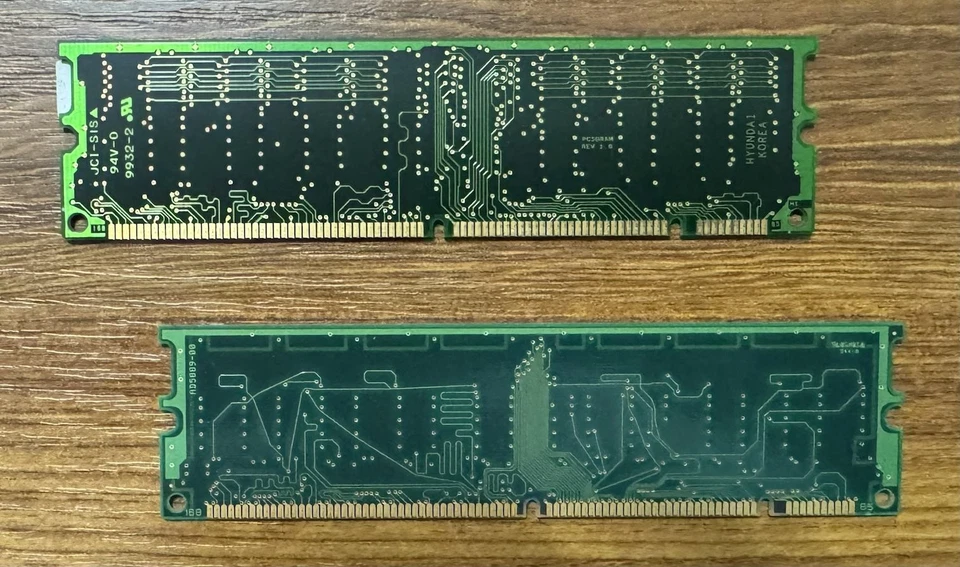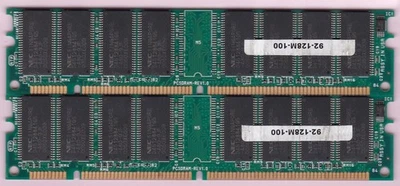PC-100 DIMM SDR SDRAM Memory
Shop by category
5,767 results
Sort: Best Match
- RM 50.45or Best OfferRM 118.71 shipping
- Pre-Owned · HyundaiRM 26.70RM 48.43 shipping
- RM 40.31RM 48.43 shipping
- RM 30.98RM 48.43 shipping
- New (Other) · CMSRM 53.74RM 74.55 shipping7 watching
- RM 897.77RM 99.46 shipping
- RM 41.37RM 49.65 shipping
- Brand New · MicronRM 12.37RM 80.22 shipping38 sold
- Pre-Owned · KingstonRM 54.78Free international shipping
- RM 136.53RM 89.40 shipping8 watching
- Brand New · CentonRM 33.06or Best OfferRM 101.03 shipping
- Pre-Owned · TranscendRM 62.02RM 74.80 shipping
- RM 45.10RM 91.43 shipping2 watching
- Pre-Owned · MicronRM 164.29or Best OfferRM 122.60 shipping
- Pre-Owned · SamsungRM 30.98RM 48.43 shipping
- Pre-Owned · UnbrandedRM 51.72or Best OfferRM 93.09 shipping
- RM 72.40RM 82.00 shipping
- RM 54.73or Best OfferRM 60.20 shipping
- RM 41.37RM 49.65 shipping
- Pre-Owned · KingstonRM 45.43RM 93.38 shipping
- Pre-Owned · UnbrandedRM 62.06RM 97.97 shipping
- Pre-Owned · UnbrandedRM 109.51or Best OfferRM 60.20 shipping
- RM 62.02RM 77.28 shipping
- Brand New · Global MemoryRM 120.52RM 191.73 shipping63 sold
- RM 41.17RM 81.05 shippingOnly 1 left!
- Pre-Owned · OWCRM 4.10RM 102.77 shipping0 bids3d 14h
- RM 65.68RM 94.93 shipping
- RM 39.26RM 74.14 shippingOnly 1 left!
- RM 164.29or Best OfferRM 32.81 shipping
- RM 53.74RM 77.03 shipping
- RM 53.74or Best OfferRM 77.03 shipping
- Pre-Owned · KingstonRM 28.92Was: RM 41.33was - RM 41.33or Best OfferRM 96.60 shipping
- RM 41.29RM 93.25 shipping
- RM 41.37RM 49.65 shipping
- RM 32.89RM 80.80 shipping
- Pre-Owned · KingstonRM 65.68or Best OfferRM 60.20 shipping
- Pre-Owned · VikingRM 175.71Was: RM 206.74was - RM 206.74RM 118.49 shipping
- RM 164.29or Best OfferRM 32.81 shipping
- RM 41.33RM 99.46 shipping
- RM 62.02or Best OfferRM 77.28 shipping
- Pre-Owned · SpecTekRM 21.91RM 27.39 shipping
- RM 54.73or Best OfferRM 60.20 shipping
- New (Other) · HPRM 66.61Was: RM 70.13was - RM 70.13RM 99.58 shippingOnly 1 left!
- RM 117.87RM 77.08 shipping
- Brand New · Global MemoryRM 142.57RM 146.17 shipping
- Brand New · Global MemoryRM 144.16RM 147.83 shipping
- RM 35.17RM 91.14 shipping
- RM 32.68RM 91.06 shipping
- New (Other) · CompaqRM 78.40or Best OfferRM 75.30 shipping
- 16Mx64 bitsBrand New · LGRM 109.45RM 103.04 shipping
- RM 41.17RM 91.31 shipping
- RM 53.74RM 74.55 shipping37 sold
- Brand New · KingstonRM 164.45or Best OfferRM 80.30 shipping
- RM 31.03RM 80.76 shipping
- RM 82.12or Best OfferRM 60.20 shipping
- RM 49.23RM 91.56 shipping
- Brand New · KingstonRM 136.95or Best OfferRM 87.65 shipping
- RM 82.12or Best OfferRM 60.20 shipping
- Pre-Owned · HyundaiRM 41.33or Best OfferRM 111.21 shipping
- Pre-Owned · SiemensRM 41.33or Best OfferRM 76.66 shipping
















![Transcend 256MB 168P DIMM [I9] PC-100 Desktop RAM Memory SDRAM - Image 1 of 4](https://i.ebayimg.com/thumbs/images/g/lEIAAeSwu1hpCqcF/s-l400.webp)













































